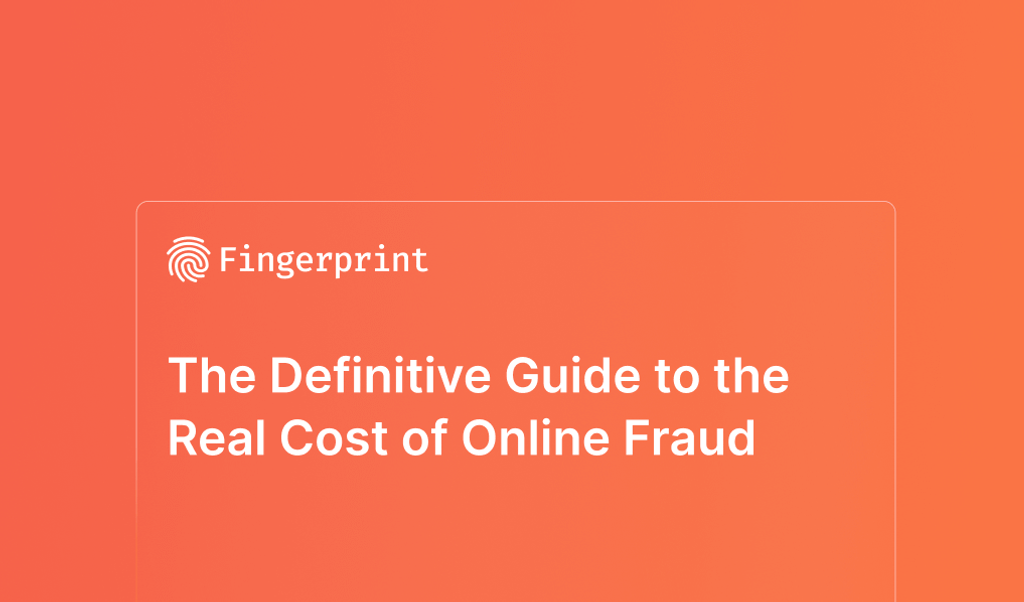
Summarize this article with
Digital commerce platforms are under pressure. Shoppers want a near-instant checkout experience with easy refunds. Merchants expect strong conversion rates and protection from fraud losses.
But meeting these expectations puts platforms in a bind: Simplifying checkout and offering easy refunds boosts conversions for merchants, but that can also increase fraud rates. On the flip side, too-strict filters and outdated fraud defenses can result in false declines and new threats like ghost stores, eroding trust with legitimate buyers.
To find the right balance, platforms need a mechanism to help merchants differentiate between good and bad buyers without compromising customer experience. In this article, we’ll break down how digital commerce platforms can tackle these challenges.
Fraud erodes marketplace trust and merchant margins
On the buyer side, ghost stores are a growing threat, leaving behind frustrated customers and lasting reputational damage to the platform. Regulators in Australia flagged more than 140 such sites in a single year, where fraudsters mimic the look and feel of trusted sellers, with professional branding, product photography, and even fake urgency tactics like “closing-down sales.” Additionally, ghost stores can be an entry point for additional risks like money laundering, identity theft, and card testing.
On the merchant side, first-party abuse is climbing quickly. Also called friendly fraud, it happens when a customer issues a chargeback on their credit card for an item they legitimately purchased — and costs merchants up to $35 of every $100 disputed. Global chargeback volume is expected to grow 24% from 2025 to 2028, reaching 324 million transactions annually.
Chargeback disputes drag fraud teams into expensive manual reviews. On top of that, merchants are increasingly holding the platform accountable for first-party fraud and its impact on their margins. They push back in commercial negotiations, demand concessions, and, in some cases, leave for competitors.
False declines undermine checkout gains
Accelerated checkout is one of the strongest growth drivers in the e-commerce industry. By storing payment and shipping details so customers can check out in just one click, these flows consistently convert better than guest checkout, proving that speed and simplicity drive revenue.
Unfortunately, many fraud prevention systems often cancel out those gains, resulting in customer frustration and revenue losses. The Merchant Risk Council’s 2024 Global eCommerce Payments & Fraud Report found that merchants reject 6% of all e-commerce orders, but between 2 and 10% of those are actually legitimate orders placed by good customers. A recent report found that false declines cost $81 billion in lost revenue per year.
False declines can happen because platforms rely on shallow and rigid signals, such as IP addresses, cookies, or device resets, to create fraud detection rules, which can cause them to misclassify legitimate buyers as fraudsters. For example, a traveler making a purchase from a new location or a shopper using private browsing can appear suspicious to these rules-based systems, even when the transaction is genuine. As a result, customers often abandon the purchase, resulting in missed conversion opportunities for merchants, now and in the future — 33% of customers who experience a false decline will either completely stop shopping with that merchant or significantly reduce their spending.
Device intelligence as a foundation for trust
E-commerce platforms often employ multiple layers of fraud protection, including Address Verification System (AVS) and Card Verification Value (CVV) rules, proxy detection, and 3D Secure. In an industry increasingly targeted by fraudsters, device intelligence complements these systems, providing privacy-conscious, real-time signals that strengthen fraud models without adding friction for good users.
Fingerprint uses more than 100 real-time device, network, and behavioral signals to generate a unique, persistent identifier for each visitor. This visitor ID remains stable even if cookies are cleared, IP addresses change, or private browsing is used. Fraudsters who try to reset their device still appear as the same visitor, making repeat abuse easier to detect and prevent.
Device intelligence can help:
- Mitigate the problem of ghost stores by providing platforms with a way to identify and block fraudulent merchants early in the onboarding process.
- Accelerate checkout and reduce the problem of false declines by identifying return users in with accuracy.
- Fight first-party fraud by identifying repeat offenders. 50% of customers who commit intentional friendly fraud do so again within 60 days of a successful claim.
Key takeaways: Protecting growth while reducing fraud
Digital commerce platforms face a balancing act: scaling fast enough to meet merchant and shopper expectations while keeping fraud under control. Legacy fraud prevention techniques can help, but they weren’t built to keep up with how quickly fraud moves today.
By running alongside existing fraud tools, Fingerprint helps platforms distinguish between legitimate users and potential fraudsters, which can reduce false declines, catch ghost stores earlier, and curb first-party abuse without adding friction for legitimate buyers. The result is a safer marketplace, stronger merchant economics, and checkout flows that remain true drivers of growth.
If you’re ready to see how device intelligence can protect your platform, our team is available to chat about your needs or help you explore our platform with a free trial.
Ready to solve your biggest e-commerce fraud challenges?
Install our JS agent on your website to uniquely identify the browsers that visit it.



